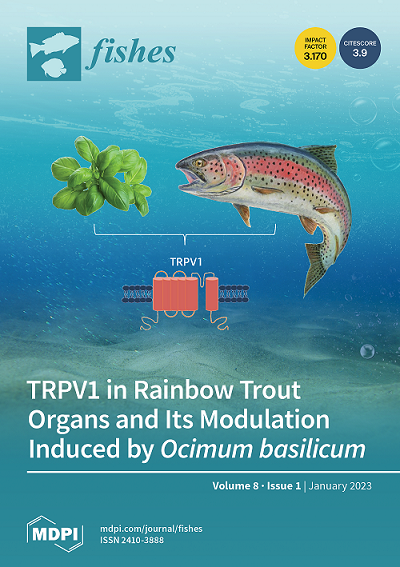Genetic Structure across Isolated Virginia Populations of the Endangered Candy Darter (Etheostoma osburni)
IF 2.1
3区 农林科学
Q2 FISHERIES
引用次数: 0
Abstract
Candy darter Etheostoma osburni, a federally endangered non-game fish, has been extirpated from most of its historic range in Virginia and now occurs in four isolated populations in the New River drainage. Understanding of population genetic structure will provide insights into the recent natural history of the species and can inform conservation management. Our objectives were to: characterize population genetic structure, estimate and compare effective population sizes (Ne), and use this information to infer recent population history. Variation at mitochondrial cytochrome b sequences among 150 individuals showed 10 haplotypes separated by 1–14 mutational steps, some shared and some unique to particular populations. Variation at 12 microsatellite loci among 171 individuals showed lower variation in Dismal Creek than in other populations. All populations showed evidence of having experienced a genetic bottleneck and were highly differentiated from one another based on both types of DNA markers. Population genetic structure was related to stream position in regard to the New River, suggesting that populations were once connected. Ne estimates for all populations were less than the 500 recommended to maintain evolutionary potential, but most estimates were greater than the 100 needed for use as source populations. Our findings indicate that habitat management to allow expansion of populations, and translocations to exchange genetic material among populations, may be effective tactics to promote conservation of candy darter in Virginia.濒危糖果鲈(Etheostoma osburni)弗吉尼亚分离种群的遗传结构
一种联邦濒危的非猎用鱼,已经从其在弗吉尼亚州的大部分历史范围中灭绝,现在在新河流域只出现了四个孤立的种群。对种群遗传结构的了解将有助于了解该物种最近的自然历史,并为保护管理提供信息。我们的目标是:描述种群遗传结构,估计和比较有效种群大小(Ne),并利用这些信息推断最近的种群历史。150个个体线粒体细胞色素b序列的变异显示出10个单倍型,这些单倍型被1-14个突变步骤分开,有些是共有的,有些是特定群体所特有的。171个个体中12个微卫星位点的变异表明,与其他种群相比,在Dismal Creek种群中变异较小。所有种群都显示出经历过遗传瓶颈的证据,并且基于两种类型的DNA标记彼此之间高度分化。新河种群遗传结构与河流位置有关,表明种群之间曾经存在联系。所有种群的Ne估计值都低于维持进化潜力所需的500个,但大多数估计值都大于作为源种群所需的100个。我们的研究结果表明,通过栖息地管理来扩大种群数量,并通过易位来交换种群间的遗传物质,可能是促进弗吉尼亚州糖果镖保护的有效策略。
本文章由计算机程序翻译,如有差异,请以英文原文为准。
求助全文
约1分钟内获得全文
求助全文

 求助内容:
求助内容: 应助结果提醒方式:
应助结果提醒方式:


